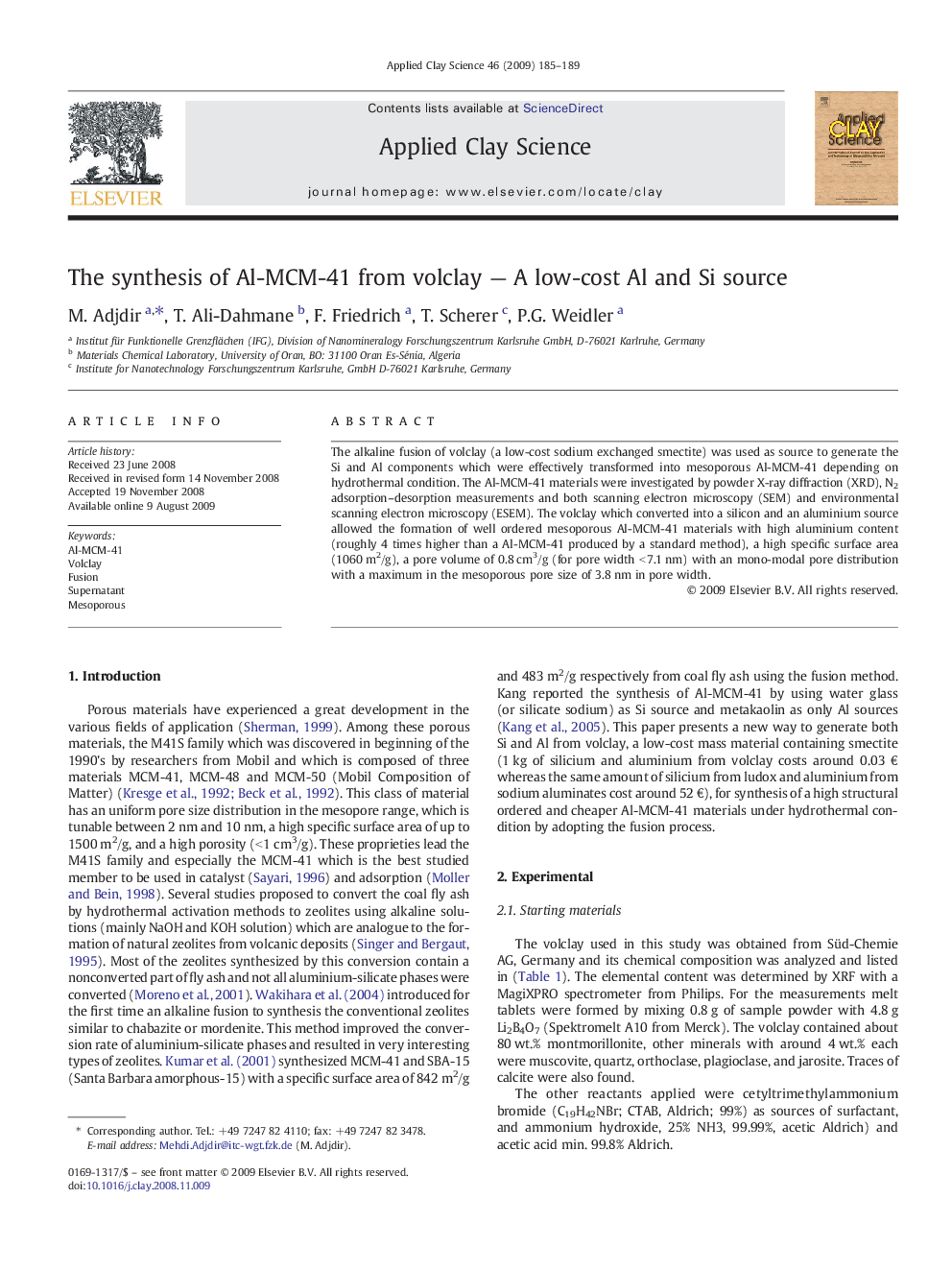| Article ID | Journal | Published Year | Pages | File Type |
|---|---|---|---|---|
| 1695903 | Applied Clay Science | 2009 | 5 Pages |
The alkaline fusion of volclay (a low-cost sodium exchanged smectite) was used as source to generate the Si and Al components which were effectively transformed into mesoporous Al-MCM-41 depending on hydrothermal condition. The Al-MCM-41 materials were investigated by powder X-ray diffraction (XRD), N2 adsorption–desorption measurements and both scanning electron microscopy (SEM) and environmental scanning electron microscopy (ESEM). The volclay which converted into a silicon and an aluminium source allowed the formation of well ordered mesoporous Al-MCM-41 materials with high aluminium content (roughly 4 times higher than a Al-MCM-41 produced by a standard method), a high specific surface area (1060 m2/g), a pore volume of 0.8 cm3/g (for pore width < 7.1 nm) with an mono-modal pore distribution with a maximum in the mesoporous pore size of 3.8 nm in pore width.
